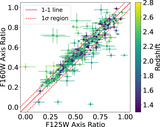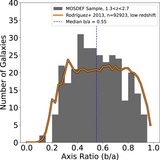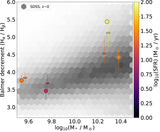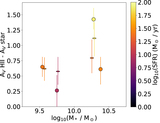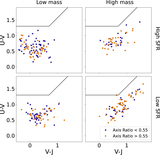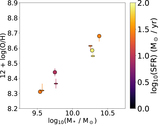Image Details

Caption: Figure 9.
One low-mass galaxy (left) and one high-mass galaxy (right) viewed by an observer as a face-on (top) and edge-on (bottom) system. The observer is represented by an eye, and the reader views the picture from above. The yellow background represents dust in the diffuse ISM, orange represents dust in typical-size star-forming regions, and red represents dust in the large 1 kpc scale star-forming clumps. Both of the star-forming structures are populated with young stars, but there is a higher fraction of young stars in the clumps. In all cases, because the ISM does not contribute much to the attenuation, the observer sees similar attenuation in the face-on and edge-on orientations. Moreover, at higher masses (right), higher attenuation is observed due to the longer average path length of light through the larger clumps. Finally, the excess attenuation (A Balmer − A V) is higher for the high-mass (high SFR) galaxies because the additional Balmer light originates in the massive clumps.
Copyright and Terms & Conditions
© 2023. The Author(s). Published by the American Astronomical Society.



